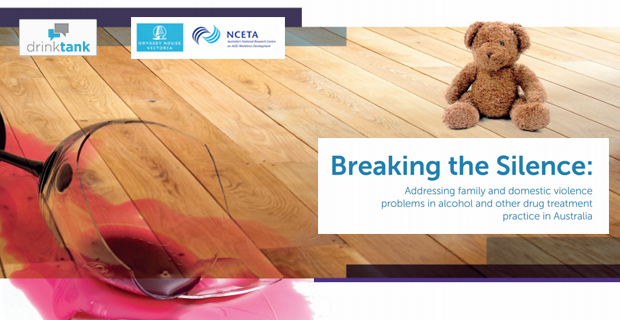Opening the recent New South Wales Network of Alcohol and Other Drug Agencies and Women’s AOD Services Network forum, Professor Ann M Roche tackled the issue of identifying and responding to victims of family and domestic violence in AOD settings.
Even though Australian Governments have severely neglected the contribution of alcohol and drugs to family and domestic violence in the recently launched Third Action Plan 2016-2019 to reduce violence against women and their children, Professor Roche credited the AOD sector with getting on with dealing with these significant risks despite the government neglect.
For some time, the alcohol and other drugs (AOD) sector has identified the needs of clients’ children, albeit often derailed by funding challenges and changes. Commendably, the sector has also seen a greater focus on the role of families over the past decade or so. However, addressing the more specific needs of women has often lagged behind other developments. None more so than the complex and often contested issue of AOD use and family and domestic violence (FDV).
Encouragingly, there are strong indicators of positive change. The AOD sector is now very much on the front foot in terms of addressing the AOD/FDV interface.
Landmark research projects such as the Harm to others helped highlight the magnitude of the impact of alcohol and drug use on others, both in terms of violence in public places as well as in personal and intimate settings and relationships. And very recently, lead organisations such as the Network of Alcohol and Other Drug Agencies (NADA) in New South Wales have also driven important capability building initiatives in this area.
It is no longer the sleeper issue that it once was.
The relationship between AOD use and intimate partner violence is complex but pervasive.
Alcohol is estimated to be a contributor to approximately half of all episodes of violence involving a partner, and around three quarters of physical assaults. Prevalence is often higher in rural and Indigenous communities.
In AOD treatment programs, the prevalence of women who have experienced domestic violence is estimated to be between 40 and 80 per cent. Similarly, in FDV programs, four to 40 per cent of women report AOD problems. While AOD use by perpetrators may contribute to or exacerbate FDV, victims may also resort to AOD use as a coping mechanism. Hence, complex patterns emerge.
The concept of violence has also been redefined and widened to include physical, sexual, psychological, emotional, and economic forms of abuse.
Perpetrators are predominantly, but not exclusively, men. Those who experience violence in their personal relationships are most commonly women but can also be men, children, or the elderly.
Given the extensive level of involvement of AOD in FDV, important questions arise about why it has not been systematically addressed by either of the sectors previously.
For some time, the FDV sector were concerned that AOD use would be seen as an excuse – an exemption or cause of violence – rather than FDV being understood to be a function of power and control in relationships (particularly in regard to male perpetrators).
As a result, there was an impasse that has only recently been overcome. It is now clearly acknowledged and increasingly understood that while AOD use does not cause FDV, it may contribute to this violence in a variety of different ways.
The odds of FDV are increased if one or both partners have an AOD problem. In addition, males with an AOD problem are also more likely to inflict more frequent violence, cause more serious injury, and/or inflict sexual violence on their partner. Children witnessing or affected by FDV are at increased risk of abuse, neglect, emotional damage and being taken into care.
In spite of both the seriousness and prevalence of the relationship between AOD and FDV, the issue has been little addressed until very recently. Services did not screen for it, workers were not trained to address it, inter-sectoral collaboration was minimal and, in general, scope for effective prevention and intervention was largely overlooked.
NCETA has increasingly focused on the need to support the AOD sector to better understand and address FDV and the needs of women, children and families in general. We have produced a series of resources, supplemented by training workshops and other workforce development strategies, to build the capacity of services and sectors to respond to these complex issues.
The first steps in this process involve raising awareness about the complex multi-faceted relationships that exist between AOD use and FDV, dispelling myths and extinguishing misunderstandings, and then identifying ways that the AOD sector can appropriately and safely address these issues.
It is abundantly clear that AOD use plays an important contributory role in FDV, and this can manifest in a variety of ways. There is significant capacity for the AOD and FDV sectors to work more collaboratively to better support clients with complex needs. Moreover, there is a clear onus of responsibility on the part of the AOD sector to pro-actively address these issues.
The time has come to wake the sleeping giant to safely and responsibly take action.
View the latest NCETA report Breaking the silence: Addressing family and domestic violence problems in alcohol and other drug treatment practice in Australia
Find out more about NCETA’s resources and projects on family centred practice in the AOD field








1 comment